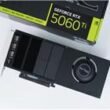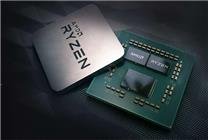Summary
- Longevity of AM4 Platform: AMD’s AM4 platform offers an impressive life cycle of up to 12 years, showcasing the company’s commitment to long-term support.
- Future-Proofing with AM5: The upcoming Ryzen 7000 series will transition to the AM5 platform, intended for five years of support, along with potential backward compatibility for future CPUs.
- Zen6 Architecture Insights: Expected to launch between Q3 and Q4 of 2026, the Zen6 architecture promises significant upgrades, including enhanced core counts and improved manufacturing processes.
AMD’s Strategic Commitment: A Deep Dive into the Future of CPU Platforms
As of October 3, AMD stands at the forefront of technological evolution with its AM4 platform, which is set to deliver an extraordinary life cycle of up to 12 years. This robust support reflects AMD’s dedication to ensuring that users get the most out of their hardware investments.
The transition to the AM5 platform is already underway with the introduction of the Ryzen 7000 series. AMD has officially pledged to support this platform for five years, extending until 2027. Recent discussions have sparked interest and curiosity about an upcoming AM6 platform. However, encouraging news has surfaced: the forthcoming Zen6 architecture may integrate seamlessly with existing motherboards, minimizing the need for users to upgrade their entire system.
According to statements from MSI, a leading motherboard manufacturer, the current 800 series motherboards are poised to be compatible with future CPUs, reinforcing the idea of longevity and investment protection. This assurance not only emphasizes AMD’s commitment to backward compatibility, but it also highlights the significant hardware flexibility afforded to consumers.
Expected to debut between Q3 and Q4 of 2026, AMD’s Zen6 architecture is anticipated to bring about remarkable advancements. The new CCD (Core Complex Die) is projected to support a configuration of 12 cores and 24 threads, along with an extensive 48MB L3 cache. Furthermore, the IOD (Input/Output Die) is rumored to include upgraded core graphics, enhancing the overall performance of the processors.
Although whispers in the technology community have suggested that AMD may adopt a cutting-edge 2nm process for CCD production using N2P technology, it is essential to approach this information with caution. The challenges associated with mass-producing a 2nm process in the near term may render such advancements unlikely for the upcoming year. Presently, the Zen 5 architecture is utilizing 4nm CCD and 6nm IOD cores, paving the way for a hopeful shift to a 3nm process for Zen6. Such a move would significantly bolster performance while keeping costs manageable.
On the consumer front, AMD’s upcoming Ryzen 10000 series is generating considerable excitement. Anticipation is already building for potential Ryzen 10000 X3D products slated for release in 2027. Given this trajectory, gamers and tech enthusiasts alike are eagerly looking forward to what advanced features and capabilities these new architectures may deliver.
In summary, AMD’s strategic positioning within the CPU market reflects a robust commitment to longevity and innovation. By supporting existing platforms and carefully planning future architectures, AMD continues to maintain its edge in a competitive landscape.
Conclusion
AMD’s ambitious plans for the AM4 and AM5 platforms demonstrate its commitment to delivering exceptional value to users. As the landscape of computer processors evolves, AMD’s forward-thinking approach will likely shape the future of computing for years to come. With exciting developments on the horizon, including the anticipated Zen6 architecture and a user-centric strategy, AMD is well-poised to maintain its status as a leader in technological innovation.





